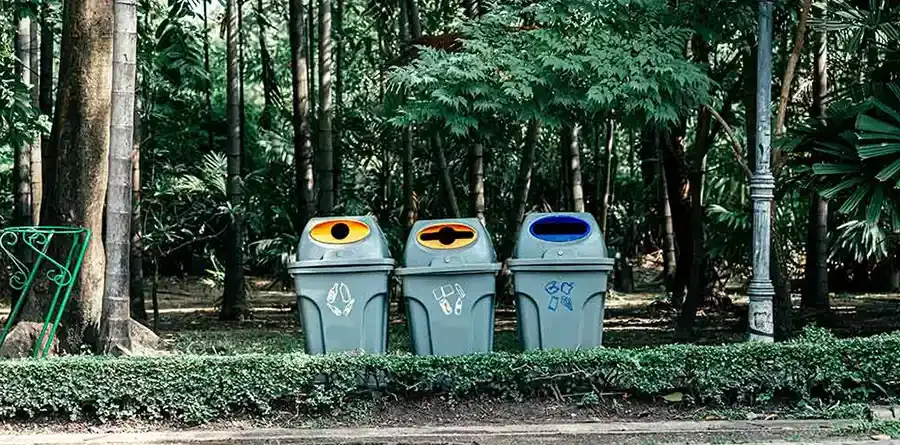Hyundai Motorstudio Senayan Park
Hyundai Motorstudio Senayan Park
Newsroom
The official news from Hyundai Motorstudio Senayan Park and a collection of innovative articles on mobility and sustainability here.
-
9 Types of Waste You Should Know About
- Hyundai Motorstudio Senayan Park Senayan Park 2022.06.01
-
Every year, the world's population produces 2.12 billion tons of waste. One big reason for this incredible number is that 99% of anything purchased will be trashed after six months. Beginning at the industrial revolution, waste has become a problem for the environment around the world.The Ministry of Environment and Forestry (KLHK) noted that Indonesia produced around 21.9 tons of waste in 2021, less than the previous 32.8 tons in 2020 and 29.14 tons in 2019.Waste is categorized as unwanted or unused material and is seen as a residual product that is not useful. This can be anything from household waste to industrial waste materials.
As part of the ecosystem, we are encouraged to understand the types of waste as part of our basic knowledge to select and sort materials according to their type so that they do not become a waste.Types of Waste Based on Its Source
1. Industrial Waste
Industrial waste can be liquid or gaseous, but mostly solid. Several industries that contribute to waste include cement, iron and steel, chemicals, plastics, and paper factories. The types of waste that they generate are also different.Regardless the type, industrial waste sometimes contains metal, plastic, dust, oil, synthetic materials, and other hazardous materials. Some is containing toxins, which are harmful to the environment. Because of its constantly evolving, industrial waste is also called modern waste.The problem is, industrial waste is often mixed with other wastes, making it more difficult to evaluate. Due to the massive amount, industrial waste often contaminates the surrounding area, including rivers, lakes, and others.2. Household Waste
Household waste can be interpreted as unused material that resulted from household activities. This category may consist of food waste, cloth, paper, cardboard, plastic, and others. That means, household waste can be organic and inorganic.Some types of organic waste include food and vegetable waste, while inorganic waste includes electronics, furniture, and others. However, some household waste can be recycled into other products.3. Plantation Waste
This type of waste is generated by plantation activities, including agriculture. Chemicals from fertilizers and crop residues are some examples of plantation waste. Pesticides and inorganic fertilizers are considered the biggest contributors to pollutants from plantation waste.Cutting branches may lead to plantation waste, even if they are organic. Some plantation waste can indeed be reprocessed into compost, but the majority remains a pollutant for soil and water sources.4. Chemical Waste
All residual materials which contain chemicals can be categorized as chemical waste. The sources may come from factories, plantations, and even households. Floor cleaners are examples of household chemical waste.Computers, televisions, and furniture which have chemical substances also contribute to chemical-based pollution. Mercury in electronic components can pollute the soil, and it’s considered as hazardous and toxic materials.Types of Waste Based on Its Characteristics
5. Organic Waste
Anything that grows will eventually become organic waste. This waste comes from all organic materials, including plants, vegetables, and living things. Regardless the source, organic waste can decompose naturally without human interference. But with an ideal management system, organic waste has a benefit if you can recycle it as organic fertilizer.6. Inorganic Waste
All types of waste that are not made from organic materials can be categorized as inorganic waste. Those that fall into the category of organic waste are metal, glass, and others. Inorganic waste has become the most discussed issue because it is difficult to decompose.Some can't even be parsed at all, except with human interference. The impacts are often negative for the ecosystem. Recycling inorganic waste is among the best solutions, although it cannot solve the entire problem. Example of recycling process is by changing its shape and function into handicrafts, souvenirs, and others.Types of Waste Based on Its Form
7. Solid Waste
Any waste that is produced by households and industry as long as it is in solid form, it can be classified as solid waste. Examples of solid wastes are plastic, bottles, paper, glass, and others. Because of its solid form, this waste is not easily degradable, some can't even be decomposed at all.8. Liquid Waste
This waste can be defined as any liquid waste, for example water from the garment factory or water used to wash clothes and vegetables. Liquid waste can be generated from factories or households.Due to its liquid nature, this waste often produces leachate which smells bad and attracts small animals such as insects and flies. Compared to other types, liquid waste is able to produce a bad odor.9. Gas Waste
There is also gas waste produced from cars, factories, and some components that do not use friendly energy. The gas then mixes with the atmosphere which affects weather changes.To wrap it up, the types of waste are different depending on its characteristic, form, and source. Regardless the type, humans as part of the ecosystem have a role in preventing the waste, but this can be done by understanding the basics, which is the types of waste.




